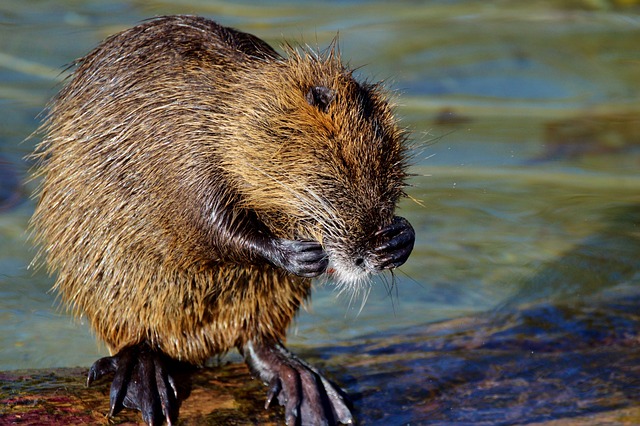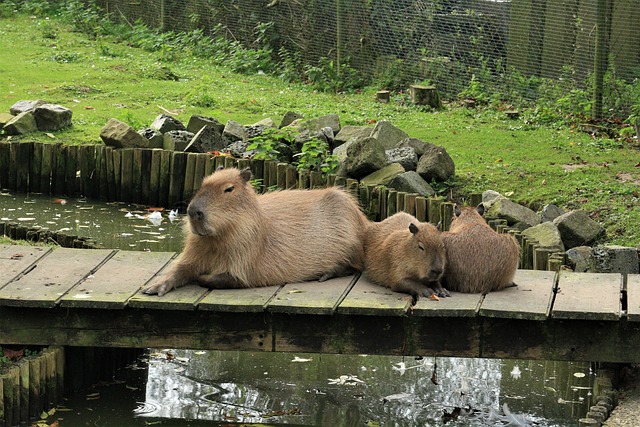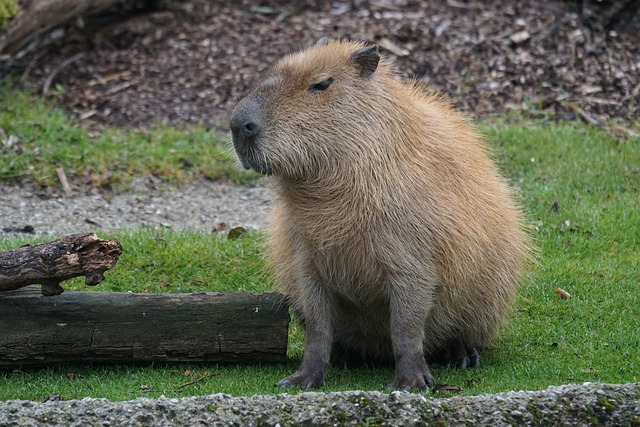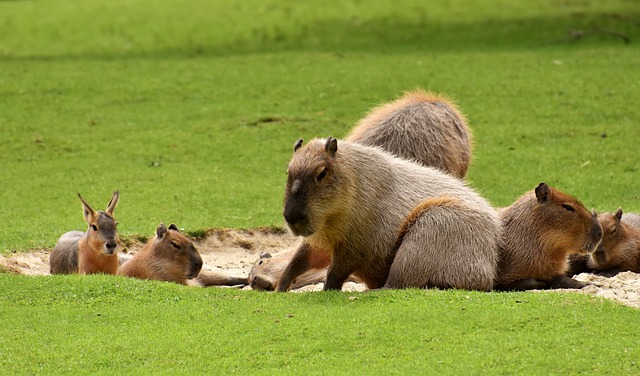Beavers, known for their impressive dam-building skills and ability to transform landscapes, are often thought to have an aquatic diet similar to other water-dwelling creatures.
With their habitat closely associated with rivers, ponds, and lakes, one might assume that these industrious animals primarily consume fish as their main food source. However, their dietary preferences paint a slightly different picture.
In reality, beavers are primarily herbivores, feeding on a diet consisting of various trees and plants’ leaves, twigs, and bark. Their preference for vegetation is not only due to their biological digestive system but also because it serves their needs for energy and sustenance.
Beavers have had a long history of evolving to survive in their aquatic environments, resulting in various adaptations that aid them in foraging and obtaining food from their surroundings.
Although some might assume that beavers would readily consume fish in their environments, it is relatively uncommon for beavers to seek them out as a food source actively.
They might incidentally eat small aquatic organisms such as insects or invertebrates while foraging.
However, their diet remains predominantly plant-based. Therefore, it is significant to understand the diet of beavers, as it provides crucial insight into their ecological role and overall impact on the environment.
Do Beavers Eat Fish
Beavers are known as semi-aquatic animals that live in and around freshwater ecosystems. Naturally, one might wonder if these creatures include fish in their diet.
However, beavers are primarily herbivores, which mainly consume plant-based food sources.
In their aquatic habitats, beavers feed on various plants such as leaves, twigs, and bark of trees like aspen, willow, and birch. They also enjoy water-based plants, including lilies, cattails, and pondweed.
These plant materials give them the necessary nutrients to maintain their health and well-being.
It is worth noting that beaver’s digestive system has evolved to extract the most nutrients from their plant-based diet. Their four-chambered stomachs contain bacteria that help break down the cellulose in plants, enabling them to acquire energy and protein from the vegetation.
It might be surprising for some to learn that beavers do not consume fish as a regular part of their diet. While they might occasionally eat small aquatic animals such as insects, larvae, or even tadpoles, fish are not a substantial food source for them.
Beavers play a crucial role in their ecosystems by building dams and lodges. These structures create a complex network of waterways, floodplains, and wetlands, which benefit many aquatic plant and animal species. Although fish are a part of these ecosystems, beavers do not rely on them for sustenance.
In summary, beavers are primarily herbivores that focus on plant-based food sources. Fish do not play a significant role in their diet, and they predominantly feed on vegetation found in their freshwater habitats.
Beaver Diet and Feeding Habits
Primary Food Sources
Beavers are primarily herbivores, which means they mainly feed on plants. Their preferred food sources are:
- Tree bark and branches: They favor the bark of aspen, willow, cottonwood, alder, and birch trees.
- Aquatic plants: They also consume various aquatic plants, such as water lilies, cattails, and pondweeds.
Even though fish are found in beaver ponds, they are usually not part of a beaver’s diet.
Beavers may occasionally eat fish, but it is uncommon, and they will typically not rely on them as a food source.
Seasonal Dietary Changes
Beaver feeding habits vary throughout the year as their diet changes according to the availability of food:
| Season | Dietary Changes |
|---|---|
| Spring | Beavers eat newly sprouted grasses and herbaceous plants. |
| Summer | They forage on aquatic plants, leafy branches, and twigs. |
| Fall | Beavers focus on cutting trees and collecting branches to store for the winter. |
| Winter | During winter, they mainly rely on their stored food cache and consume bark and branches. |
Beavers are adaptable to the changing seasons, efficiently managing their food resources to meet their dietary needs.
Beaver Behavior and Ecology
Habitat Construction
Beavers are known for their impressive ability to construct dams and lodges, which serve as their primary shelters. Dams are crucial in creating the ponds and wetlands that beavers call home.
Their construction skills significantly impact the surrounding environment, and many people are surprised to learn that beavers do not primarily consume fish as part of their diet.
Instead, beavers feed on the bark, twigs, and leaves of deciduous trees such as willow, poplar, birch, and herbaceous plants, particularly during warmer months. In the winter, they rely on a cache of branches stored near their lodges, submerged in the water, to prevent freezing.
Impact on Ecosystems
The activities of beavers can dramatically alter ecosystems, but their impact isn’t solely negative. By building dams, beavers create ponds that reduce water velocity and increase water depth, promoting the growth of aquatic plants.
The newly created wetlands provide habitat for many other species, such as birds, amphibians, and insects.
While beavers don’t typically prey on fish, their engineering efforts can indirectly affect fish populations.
Slower water movement may encourage sedimentation, smothering fish eggs, or altering habitats for fish species that require fast-moving water.
On the other hand, new ponds and wetlands can provide spawning and feeding grounds for some fish species, helping to maintain a diverse aquatic community.
In summary, beavers have a complex relationship with their ecosystem, driven by their incredible construction abilities and herbivorous diet.
Though they don’t consume fish as a primary food source, their influence on aquatic habitats can positively and negatively impact fish populations.
Common Misconceptions
One widespread misconception about beavers is that they are fish-eating creatures. This belief may have arisen from their aquatic habitat and expert swimming abilities.
However, beavers are primarily herbivores, preferring a diet of tree bark, twigs, leaves, and aquatic plants.
Another reason for this misunderstanding could be the impressive dams that beavers build in rivers and streams.
People may assume that these structures are created to catch fish. In reality, beavers build dams to create deeper water habitats that allow them to evade predators, access food sources, and create a suitable environment for their lodges.
It is also worth noting that, despite popular belief, beavers are not strict vegetarians.
Although their primary food source is plant-based, they have been known to consume insects, frogs, and other small animals occasionally.
This fact may have contributed to the confusion around the beaver’s dietary habits. However, fish do not comprise a significant portion of their diet.
The idea that beavers are fish-eating creatures is a common misconception. Their diet mainly consists of plant material, and their impressive aquatic engineering serves purposes other than catching fish.
While they may occasionally consume small animals, fish are not a staple food source for these herbivorous mammals.
Conclusion
Beavers are primarily herbivorous, feeding on various aquatic and terrestrial plants. They consume tree bark, leaves, roots, grasses, and aquatic plants such as water lilies and cattails. Although they are not piscivorous by nature, beavers may occasionally consume fish.
In instances where fish become trapped in beaver ponds, beavers may opportunistically feed on them. However, fish consumption is not a regular part of their diet. It is important to note that beavers play a vital role in their ecosystems by creating and maintaining wetland habitats, which benefit various species, including fish.
To recap:
- Beavers primarily eat plant materials
- They may consume fish opportunistically but not regularly
- Beavers play a crucial role in maintaining ecosystems and wetland habitats for various species
In conclusion, while beavers are not primarily fish-eaters, evidence suggests that they may consume fish occasionally in certain circumstances. They are mainly herbivorous and play a critical role in shaping their ecosystems.




